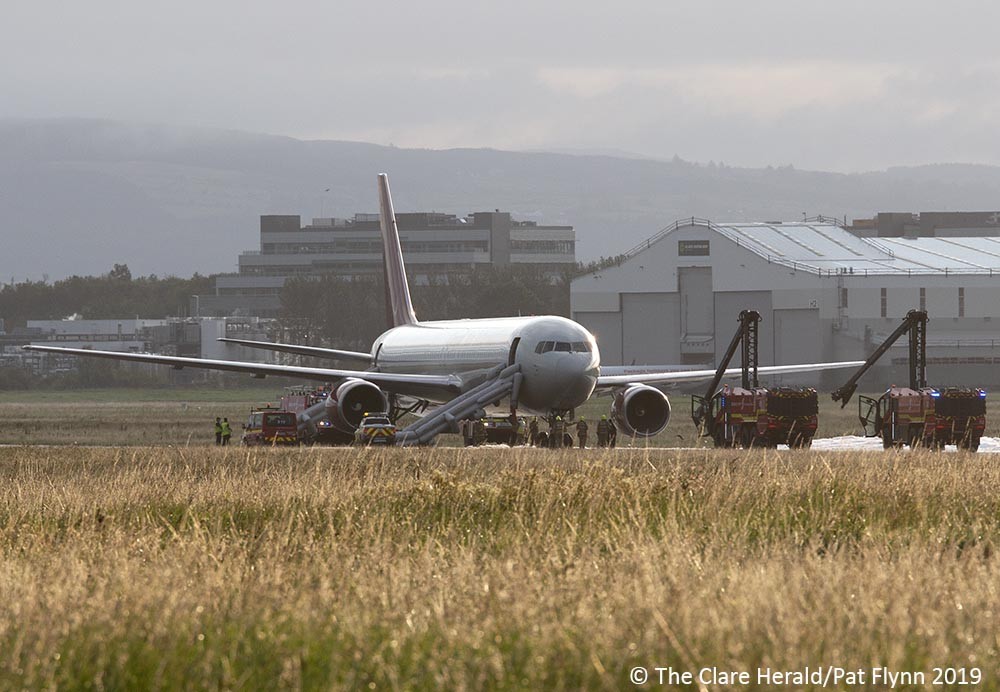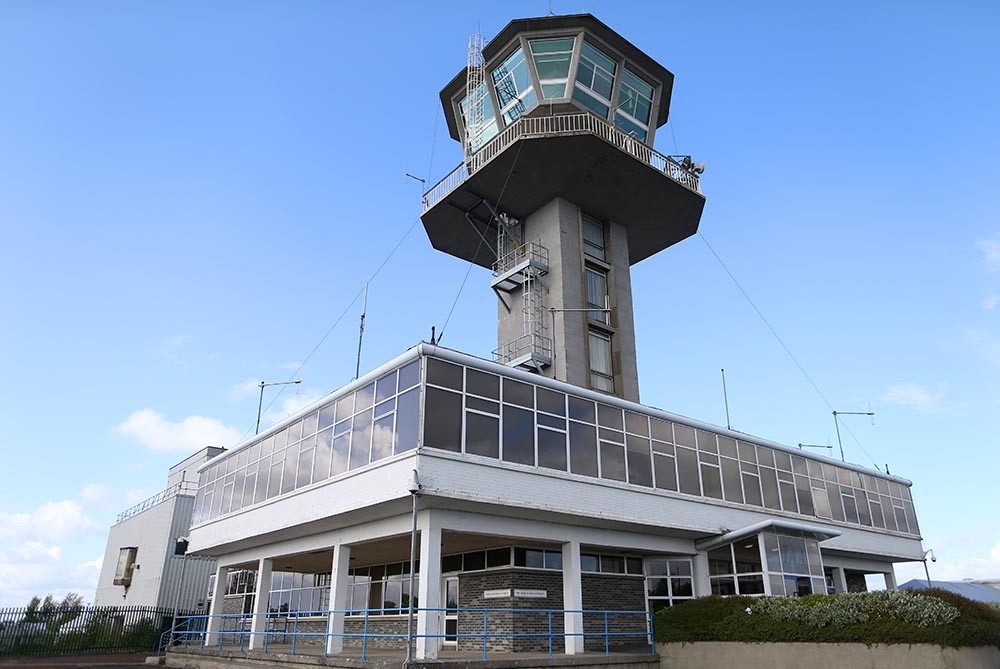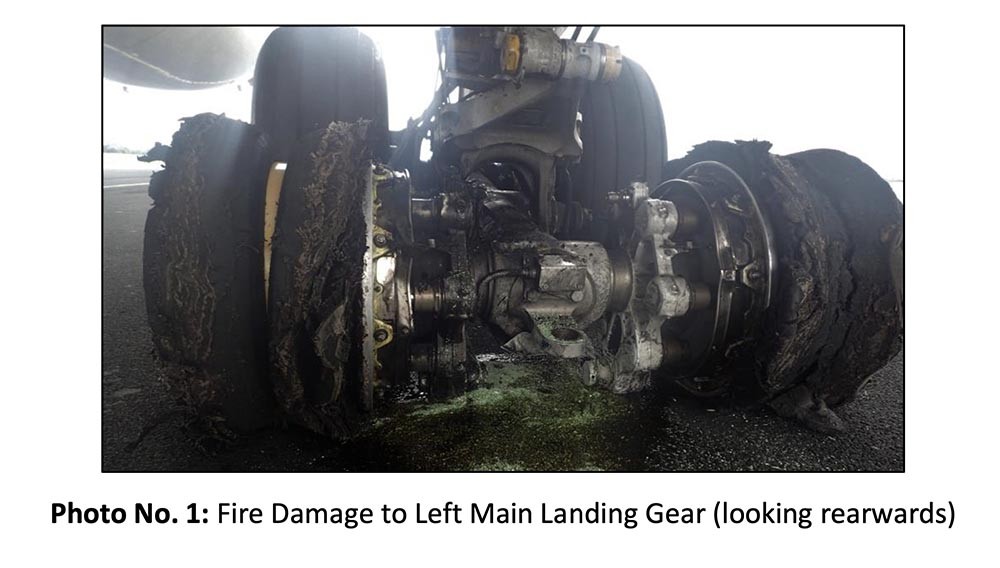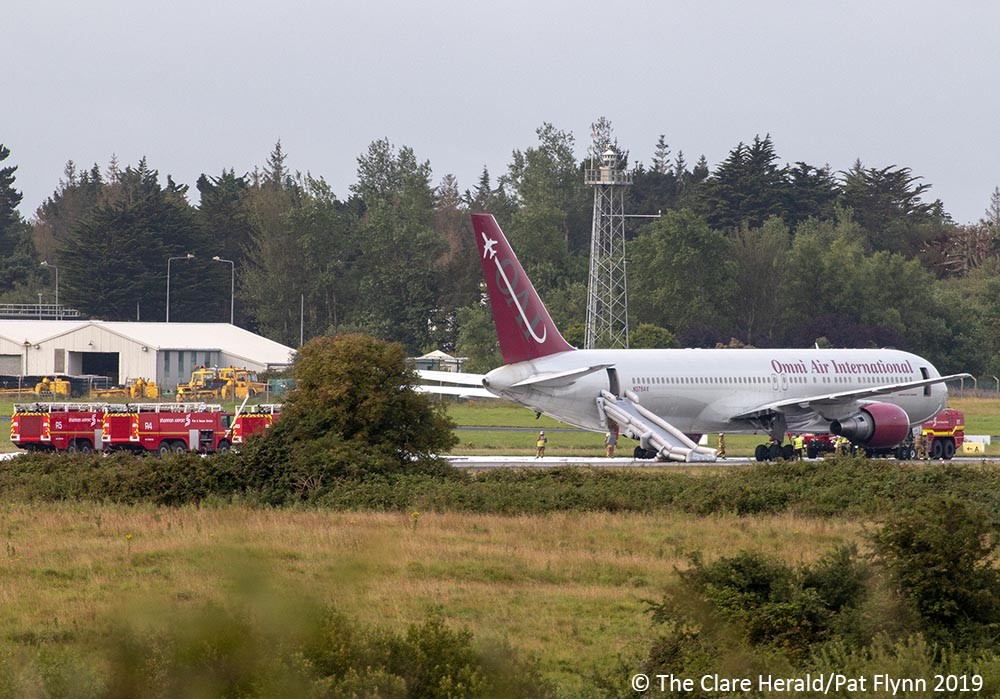
The undercarriage of a commercial jet carrying US military personnel caught fire on the ground at Shannon Airport after the crew had earlier carried out a rejected take-off at high speed.
The Air Accident Investigation Unit (AAIU) of the Department of Transport has issued its Final Report into the August 15th, 2019 incident in which one passenger was slightly injured during an evacuation on the runway while the airport’s only runway was closed for six hours.
At 4.46am on the day of the incident, Omni Air International flight 531, a Boeing 767-330(ER) jet, was cleared to take off from Shannon Airport and had commenced the take-off roll when the commander heard an ‘unusual noise’ which was increasing in volume. The crew elected to abort the take-off.
Following the rejected take-off the aircraft taxied first to a holding position (Taxiway A) so the crew could carry out checks and discuss the holding time that would be required to cool the brakes before another take-off could be attempted.
The crew advised controllers that they would require 35 to 40 minutes and the controller directed the crew to hold on Taxiway C.
Whilst holding on the taxiway, the flight crew contacted the Aircraft Operator’s Maintenance Department, who advised that the aircraft should return to stand so that inspections could be carried out. Following discussions with the air traffic controller, the flight crew were given permission to taxi the aircraft back to stand.

At 5.13am, during the taxi back to the terminal, via the main runway, air traffic control advised the flight crew that smoke could be seen emanating from the aircraft’s left main landing gear. The flight crew requested a service vehicle to assist.
At 5.15am, the airport Duty Office informed the air traffic controller that the left main landing gear was on fire. The controller informed the flight crew of the fire and requested that they initiate an immediate evacuation from the right side of the aircraft.
Shannon’s Airport Fire and Rescue Service (AFRS) was immediately dispatched to the aircraft. By 5.19am, all passengers and cabin crew had been evacuated using the aircraft emergency slides and the fire had been extinguished. Subsequently, the commander informed ATC that the flight crew was about to leave the aircraft. One passenger sustained a minor injury during the evacuation.
The AAIU report states that the flight crew calculated a cooling time for the brakes, but underestimated the maximum speed achieved during the attempted take-off.
The investigation determined that a call to reject the take-off was made at a recorded computed airspeed of 149 kts although both flight crew members believed that at the time, the aircraft was travelling at an indicated air speed of less than 120 kts.
The crew carried out this rejected take-off because they feared that a cockpit window was not closed properly.
The investigation determined that an issue with the jet’s Auxiliary Power Unit (APU) meant that air conditioning was not available when the flight crew was carrying out pre-flight preparations. As a consequence, the cockpit became very warm and the left sliding window was opened.
The APU defect was rectified before departure, and the flight crew closed the left cockpit window and observed that the window indicator showed ‘closed’.

The commander informed the Investigation that the flight crew carried out the required check of the cockpit sliding windows. The commander was confident that the check had been carried out according to the procedure.
The co-pilot told the investigation that during the take-off a rushing sound was heard after 80 kts and the co-pilot queried the status of the commander’s window, saying ‘window ok? ’ but was not sure if the question was heard above the noise.
The co-pilot also informed the Investigation that indications for wheel brake temperature were not available to the flight crew. The co-pilot observed that when the aircraft was taxiing back to stand after the rejected take-off, it appeared that the brakes were ‘grabbing’.
He also informed the Investigation that there were no abnormal system indications during the take-off roll.

Analysis of data from the Flight Data Recorder by the Aircraft Manufacturer showed that the performance of the wheel and brake assemblies was as expected for the weight of the aircraft and the speed of the rejected take-off. Disassembly and Inspection of the wheels and brakes by the Manufacturer did not identify a source of the fire.
The AAIU determined that the ‘probable cause’ of the incident was a “fire in the brake assembly during taxi, following a high-speed rejected take-off which occurred 28 minutes earlier.”
The AAIU added: “This Investigation does not sustain any Safety Recommendations.”

